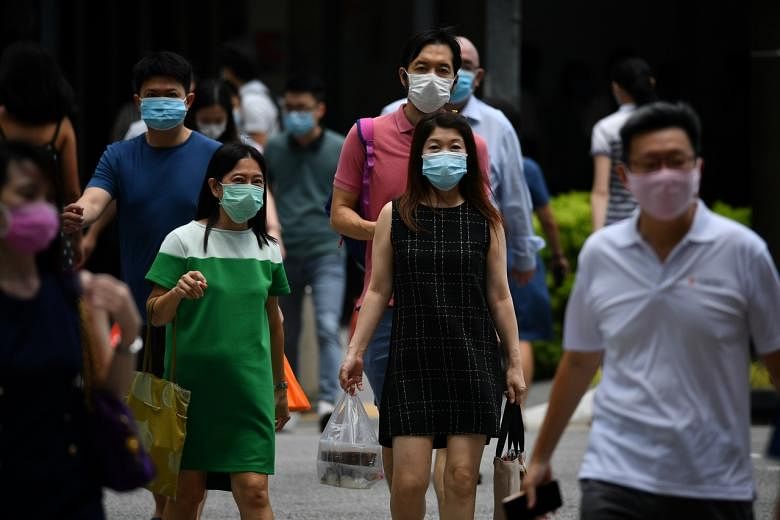Employment took a major hit in the first quarter of the year as the pandemic battered pretty much every sector of the local economy.
Declines in headcount were widespread but sharpest in vulnerable segments such as food and beverage, retail trade, wholesale trade, accommodation, as well as the arts, entertainment and recreation.
Construction and manufacturing also saw drops, which mostly affected foreign workers, data from the Ministry of Manpower showed yesterday.
The declines outstripped employment gains in industries such as public administration and education, as well as professional, financial and insurance services.
The falls in worker numbers across the economy are also evident using a new indicator known as the employment diffusion index, which measures how widespread employment change is.
The indicator stood at 38.7 last quarter, which meant there were more industries that cut employment than those that increased their payrolls.
The figure was 55.7 last December, when more industries were expanding headcounts.
Maybank Kim Eng senior economist Chua Hak Bin said: "The sharp fall in the diffusion index reflects the breadth of this pandemic recession. A large number of sectors have been hit, far larger than in past recessions, which were more narrowly impacted by externally oriented sectors such as manufacturing and trade-related services."
DBS senior economist Irvin Seah said the index is useful as a broad gauge and that it is not a surprise that more industries are affected.
"No one can escape this crisis, and we see that already being manifested in gross domestic product (GDP) figures," he noted.
A quarterly survey of economists by the Monetary Authority of Singapore forecasts a 5.8 per cent contraction in GDP this year.
But Ms Selena Ling, OCBC head of treasury research and strategy, noted that the broad-based impact on the economy suggests that global factors are behind the downturn in growth and contracting labour market.
That, in turn, bodes well for a widespread recovery here when the world economy rebounds.
Meanwhile, seasonally adjusted job vacancies fell from 52,700 last December to 46,300 as of March.
The seasonally adjusted ratio of vacancies to unemployed people also hit a decade low of 0.71. This means that there were only seven openings for every 10 job seekers.
Manpower Minister Josephine Teo noted that although overall job vacancies fell, there were more openings in sectors such as electronics manufacturing and health and social services.
CIMB Private Banking economist Song Seng Wun said government measures have created new roles such as safe distancing ambassadors and other temporary jobs.
"Information and communications technology also continues to support job creation in a big way... but by and large, when we are talking about the recession deepening, more jobs will be lost than created," he said.
Mr Song hopes that measures such as the Jobs Support Scheme will prevent unemployment reaching previous crisis highs.
The scheme provides wage support to employers and helps enterprises retain their local employees.
Dr Chua forecast that job losses could be between 100,000 and 150,000 this year, lower than earlier estimates because of the Government's push to provide incentives for firms to hire and offer traineeships. He estimated that the unemployment rate could peak at 4 per cent to 4.5 per cent.
National Trades Union Congress assistant secretary-general Patrick Tay said in a Facebook post: "Although many unionised companies are tapping the various government support schemes and training funding to cut costs and save jobs, I am aware that many non-unionised companies are starting to feel the heat and planning to take or have taken resolute actions to manage excess manpower, including becoming insolvent.
"We should pay close watch to the second-quarter report and also in the second half of the year when the effects of the Jobs Support Scheme are gradually tapered down."



